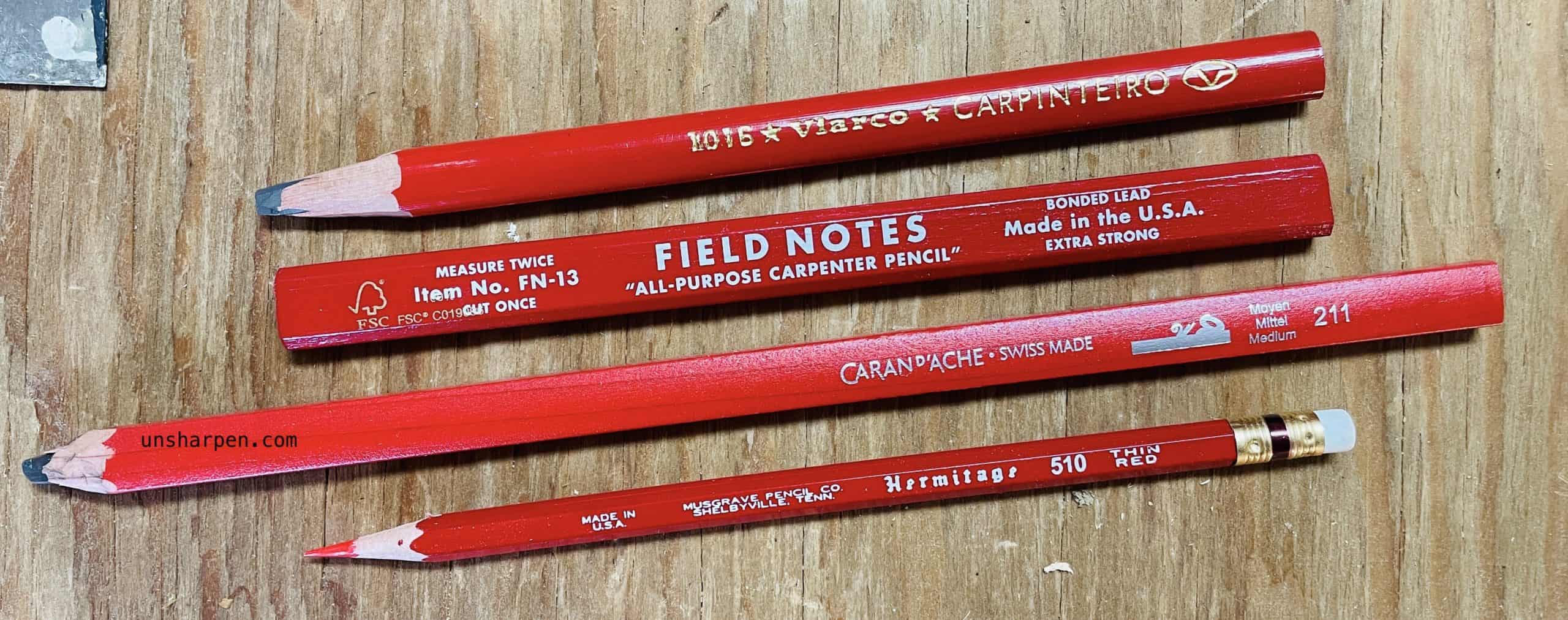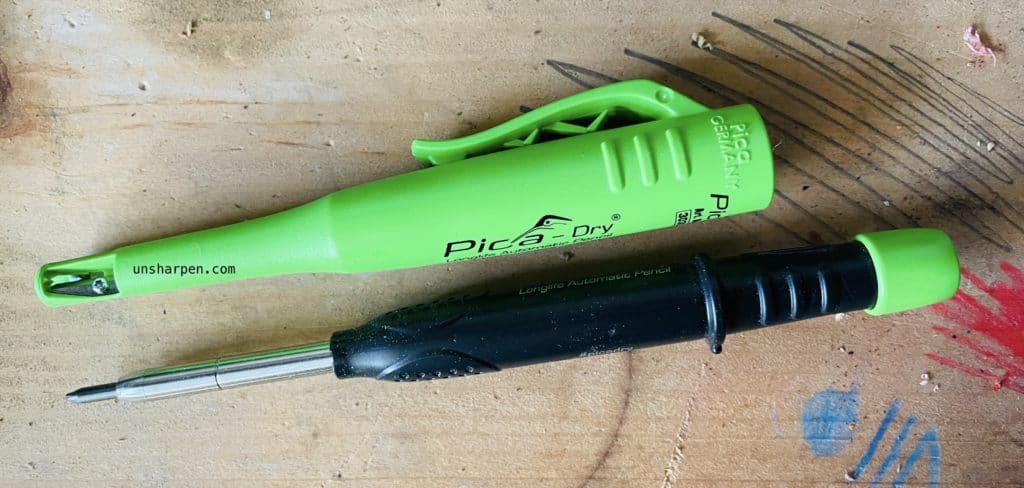Specialty pencils aren’t nearly as common as they were before the computer and smartphone took over our daily tasks. One such writing instrument is the carpenter pencil or carpenter’s pencil, depending who you ask.
But what is a carpenter’s pencil?
Carpenter’s Pencil Basics
Carpenter’s pencils are a type of wooden pencil. They have the following qualities, in order of importance:
- larger than normal size
- flat edges
- chisel point lead (lead has a rectangular shape)
- no metal ferrule at the end
- no eraser
Why Is A Carpenter’s Pencil Designed This Why?
The pencil is purpose-designed for woodworking and other similar handyman tasks. How so you ask?
The large size is able to be handled with gloves and it makes the pencil extra sturdy. Why should it be sturdy? This is important because the pencil s writing on very rough surfaces, like a piece of plywood so the lead has to be tough. Also carpenter’s pencils are usually sharpened with a utility knife or other sharp blade, so the pencil needs to be large enough to be cut down quickly.
Carpenter’s pencils aren’t round so they don’t roll away when you put them down between tasks. They don’t have erasers since you aren’t working with paper and you can’t really eraser graphite from wood or stone surfaces. There is not ferrule on the opposite end of the pencil, so that you can sharpen both sides and stop your work to sharpen half as often.
Finally, carpenter’s pencils use rectangular or “chisel point” graphite. This for two reasons. First of all, a chisel point pencil is easier to sharpen with a blade than a round lead. Second, the point at the end of a carpenter’s pencil is commonly blunt (because of the rough surfaces and infrequent sharpening) so by using a rectangle lead, you have four corners that can be relatively sharp instead of one round, blunted end. Ultimately you get bette line integrity and more accurate lines with the rectangular lead.
Best Carpenter’s Pencils
There are many excellent carpenter’s pencil sold today, even though wooden pencils aren’t as common as they used to be. Some notable models include:
- Dixon Red and Black 997-M
- Dixon Ticonderoga 19973 Hard Carpenter Pencil
- Caran D’Ache 211 Mittal
- Viarco Carpinteiro 1016
- Home Depot Carpenter Pencil
- Staedtler Carpenter’s Pencil
Vintage carpenter’s pencils have become quite collectible end rather expensive. One of the most desirable pencils is the Eberhard Faber Plumb Line 777.
Carpenter’s Pencil Alternatives
Are carpenter’s pencils the only option for writing on wood? Of course not. Many people have skipped pencils and moves to Sharpie style markers or pencils, both of which have strengths and weaknesses.
For example a permanent marker has better visibility than pencil and it never needs to be sharpened, but markers don’t work as well on dirty/greasy surfaces and the felt tip wears well before the marker runs out of ink.
A more modern day on the carpenter’s pencil is the Pica-Dry Longlife Automatic Pencil 3030. This is a clutch pencil pencil with that is about 2 mm thick. It has a sharpener built in, a protective cap over the lead, and it can be pushed to extent. It also has a big clip so it can go securely in a pocket or tool belt.
Is the $15 Pica-Dry pencil better than a wooden pencil? Not really, but it does have some distinct advantages.

